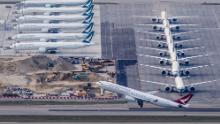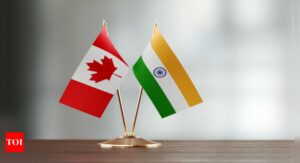Hong Kong takes stake in Cathay Pacific as part of $5 billion bailout

Cathay and parent company Swire Pacific announced plans to raise 39 billion Hong Kong dollars ($5 billion) in new capital on Tuesday to help the airline survive the crisis wrought by the coronavirus pandemic.
The Hong Kong government would provide the bulk of the new funds by extending a bailout package worth 27.3 billion Hong Kong dollars ($3.5 billion) consisting of loans and preferred share purchases. The rest of the capital will come from issuing new stock.
The deal would leave Aviation 2020, a limited company owned by Hong Kong’s government, with a stake of roughly 6% in Cathay. The government will also appoint two observers to Cathay’s board to safeguard its investment, city finance secretary Paul Chan told reporters.
The airline is “grateful” for the government’s “capital support, which allows Cathay Pacific to maintain our operations and continue to contribute to Hong Kong’s international aviation hub status,” Patrick Healy, chairman of Cathay, told reporters on Tuesday.
“Without this plan, the alternative would have been a collapse of the company,” he said.
Like elsewhere, business and holiday travel to and from the Asian financial hub has ground to a halt. Healy said on Tuesday that Cathay’s passenger revenue has collapsed to around 1% of normal levels. The carrier has cut executive pay, furloughed staff and has been operating at 3% capacity to preserve cash. It announced executive pay cuts of up to 30% on Tuesday.
Cathay has been burning through as much as 3 billion Hong Kong dollars ($387 million) a month since February, drawing down quickly on the cash pile of 20 billion Hong Kong dollars ($2.6 billion) it had at the beginning of the year.
The airline is now re-evaluating all aspects of its business model, and “inevitably this will involve rationalization of future planned capacity compared to our pre-crisis plans,” Healy said.
Cathay said that it is unlikely to return to the same number of flights it was operating before the pandemic any time soon.
“Hong Kong is a city, compared to US or China, once we do not have international flights, Hong Kong will stop,” Chan told reporters.
Both Cathay and Hong Kong officials said the government does not intend to remain a shareholder in the long term.
Dividend payments for the government’s preferred shares are designed in a way to spur Cathay to pay down and redeem the shares at the earliest opportunity, Healy said.
Governments have committed $123 billion in financial aid to airlines around the world, the International Air Transport Association said in a report in May. The majority of the aid consists of loans, loan guarantees and deferred taxes that will need to be repaid, the aviation group said.









